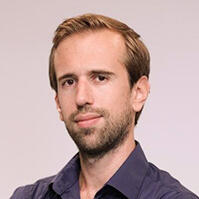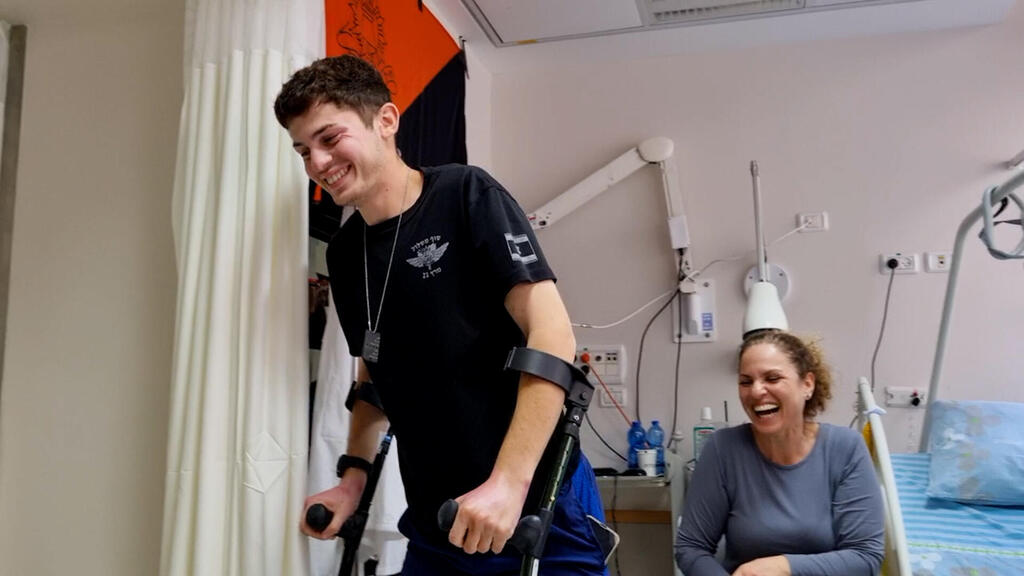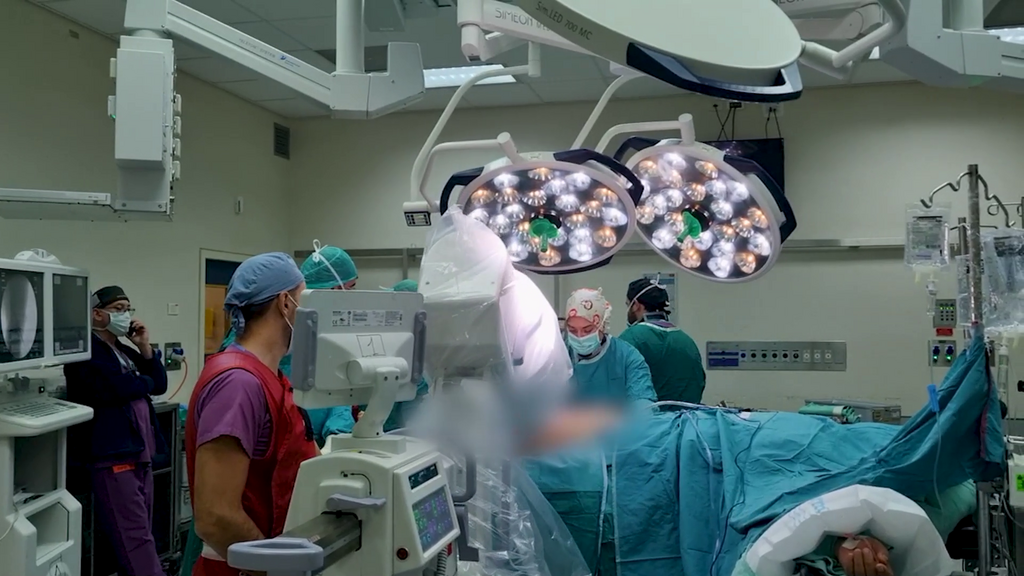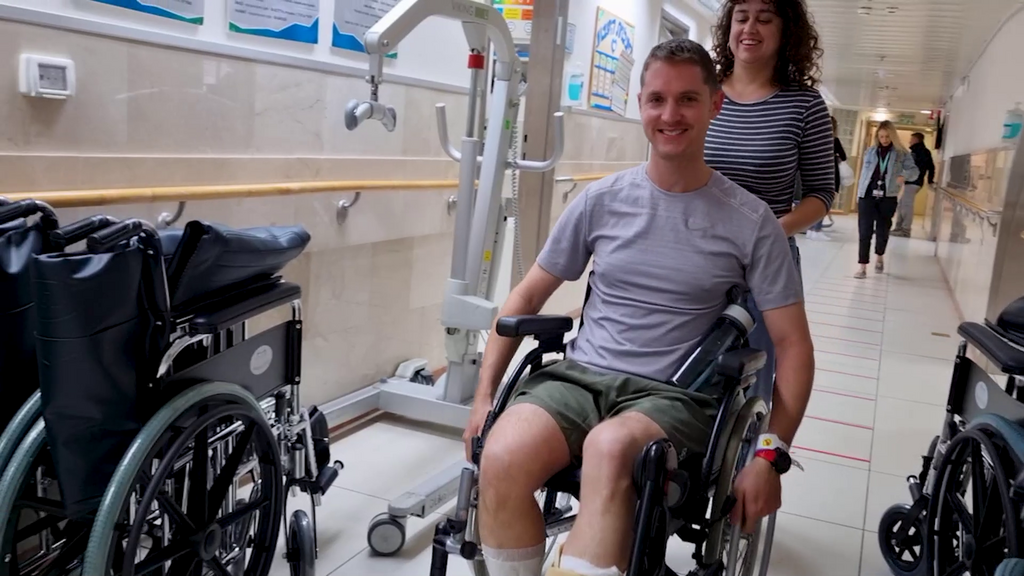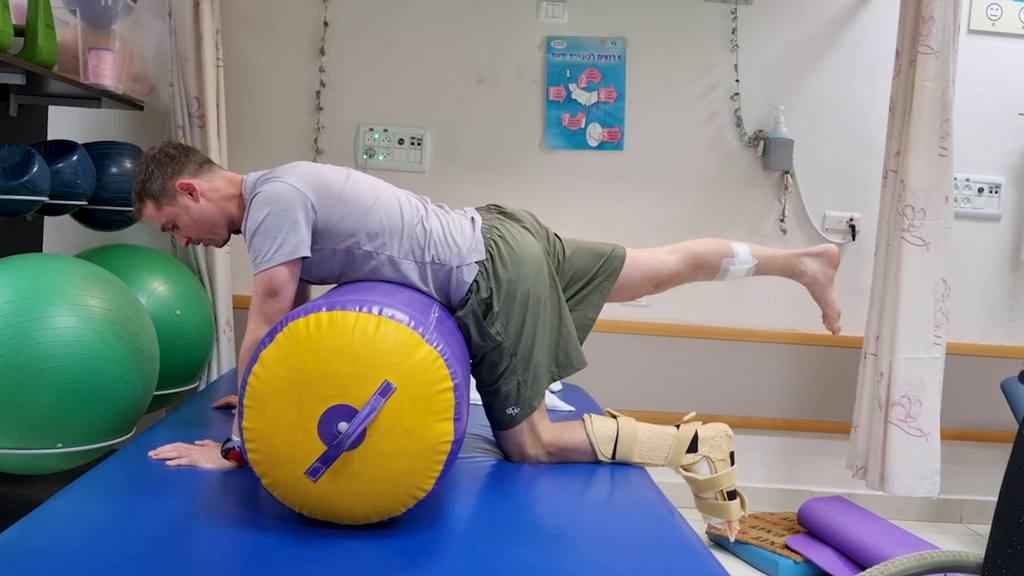Getting your Trinity Audio player ready...
'Wounded soldiers don't need pitying looks'
(Video: Gilad Jalon)
On the morning of October 7, Master Sergeant (res.) Or Shizaf, an IDF soldier who was injured by an explosion in Gaza, completed a 26 km run. "Now my sport is physiotherapy, it's recovery, with the goal of returning to my true sport, to running," he said.
More stories:
Not far from Shizaf is also Lieutenant Rotem, a Combat Engineering Corps officer, who arrived at the Soroka Medical Center sedated and intubated after being hit by an RPG rocket in Gaza. Just like in cases like these, every helicopter landing at the front of the hospital makes everyone tense.
From the start of the war in Gaza, 2,503 wounded were treated at Soroka Medical Center, including 800 civilians with the rest being soldiers. About 270 injured arrived in serious and critical condition, and another 300 in moderate condition.
Alongside success and rehabilitation in saving lives, there are many wounded soldiers and civilians who will have to continue living without a limb. Dr. Asaf Acker, head of Soroka’s Orthopedic Trauma Unit, says that 80% of the wounded soldiers arriving from Gaza come in with upper and lower limb injuries.
"Unfortunately, there are many amputations carried out in the field or which we had to perform here because it was impossible to save the limbs. Many patients lost limbs in this war, and I think each and every one of them teaches me a lesson in life on how to cope with difficulty," says Dr. Acker. "They’re brave, strong, and amazing individuals dealing with a very challenging situation, inspiring in their resilience."
“People sometimes ask me, ‘Say, isn't it hard for you to work like this? To work continuously, to work many, many hours?' It's my privilege to do this."
How do you tell an injured person who’s recovering that they have to part with a limb?
"There’s no doubt it’s never easy to have this conversation. But I tell myself that as difficult as it may be for me, the patient and their family are the focus, and they are the ones receiving the tough news. I’m unfortunately the one who sometimes has to deliver it, but I’m not the main concern."
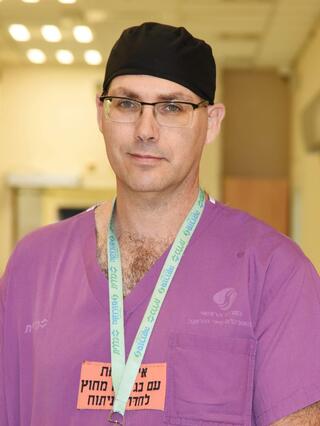 Dr. Asaf AckerPhoto: Soroka Medical Center
Dr. Asaf AckerPhoto: Soroka Medical CenterThe evacuation time of the wounded is critical, and therefore many severely injured soldiers are transported by helicopter to Soroka Medical Center and arrive for treatment in less than an hour, which, in retrospect, has saved many lives.
"The evacuation times in this war are so fast. Never in the history of military medicine have there been such rapid evacuation times from the field to the hospital," says Dr. Acker, "it allows us to treat them much more effectively."
Dr. Acker also addresses reports that applying tourniquets has led to the loss of limbs: "The impact of tourniquets is very relevant. I have no doubt that every tourniquet placed in the field saved lives. It’s true that sometimes the cost of saving a life is the loss of a limb, but it’s very rare for this to happen due to the effect of the tourniquet."
Acker further noted that the main causes of injuries in the field are combat-related, including “explosions, shockwaves, gunfire, and shrapnel.”
'12 severely injured soldiers and civilians in one day'
Prof. Gilbert Sabag, Chairman of the Surgical Division and Head of the Soroka Trauma array, adds that a large portion of the injuries is complex and more challenging than those in previous Israeli wars.
"I think the record was 12 severely injured soldiers and civilians in one day," Prof. Sabag says. The surgical division he oversees encompasses all surgical departments such as ophthalmology and orthopedics, providing comprehensive treatment of injuries around the clock with the help of a staff numbering 400 people.
Prof. Eldad Zilberstein, head of Soroka’s Plastic Surgery Division, adds that beyond injuries to the limbs, noticeable damage to tissues is also seen. After orthopedic surgeons stabilize fractures, plastic surgeons come in to ensure the coverage of tissues, skin, and muscles.
His department has treated hundreds of wounded individuals, dozens of whom suffered severe injuries. "We take tissues from other places so that the same fracture can heal, and that leg or hand can continue to function."
Prof. Zilberstein explains that if proper coverage is not provided for the organ, it may become infected, infecting the bone as well, which could lead to additional complications. "These are severe injuries that require prolonged hospitalization, intensive care, and numerous surgeries."
Rehabilitation - A lifelong process
Master Sergeant (res.) Or Shizaf is suffering from bone fractures and shrapnel injuries. He was rushed to Soroka with an open fracture, and is now determined to work hard on his rehabilitation.
His mornings begin with physiotherapy, where exercises teach him to work his affected limbs again. "I feel that I’m progressing a lot. My abilities are much better than they were two weeks ago and even yesterday," he says.
"Wounded soldiers want their independence and to do things on their own. They don't need pitying looks or to be asked a million times if they need help."
Lieutenant Rotem suffers from burns and injuries following the explosion of an RPG rocket. "At first, I thought I was in a coma. I couldn't see, couldn't talk, but I did feel. I only regained consciousness at 22:00 that same day."
The first thing he asked was about the soldier who was with him during the incident: "When I woke up, I was happy to be alive, and that my family is around me. I didn't have thoughts about the injury; I was just happy that I’m whole and that all my limbs were in place."
Until two weeks ago, he couldn't step on his foot, but he’s now progressing and recovering at an impressive pace, already able to turn on his own using crutches. "According to what the doctors say, I've accelerated my healing process by 250%," he adds.
"Wounded soldiers want their independence and to do things on their own. They don't need pitying looks or to be asked a million times if they need help. Ask them how they are just as you would ask any regular person because if they don't pity themselves, they certainly don't need you to pity them,” he says.
Rehabilitation is a long and complex process. “Injury takes place in a second. The Treatment takes hours, days, and sometimes weeks. But rehabilitation is the significant part of it, and it continues throughout their entire lives; it never ends, and without it, no one will return to functioning again,” Dr. Acker says.
And how does he manage to function under this pressure and load? “People sometimes ask me, ‘Say, isn't it hard for you to work like this? To work continuously, to work many, many hours?' It's my privilege to do this, and just like some people have their reserve duty fighting in Gaza, this is my reserve duty,” he says.



